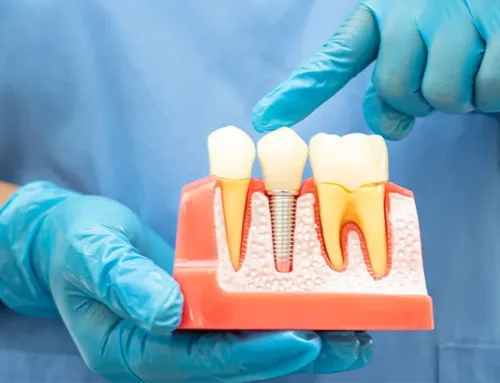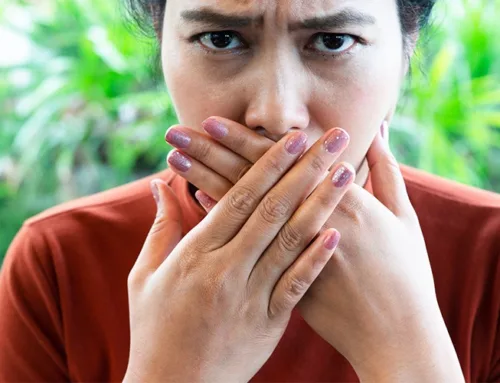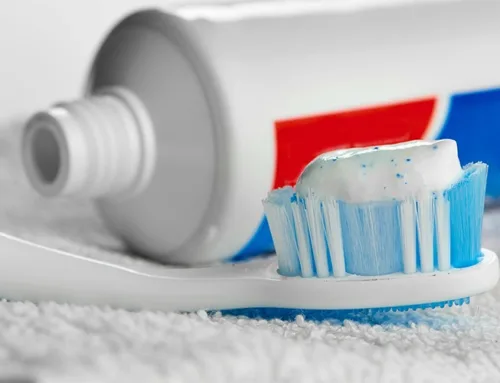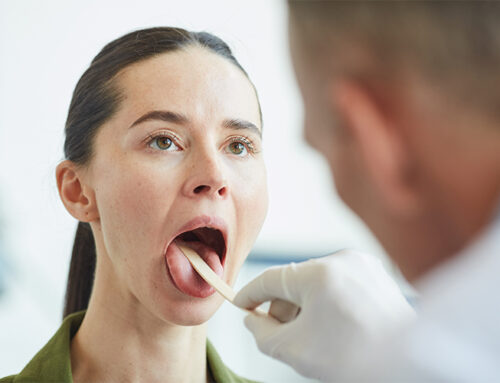Tongue Scraping: To Boldly Clean What No Toothbrush Has Cleaned Before
May 15, 2023
Your commitment to perfect oral hygiene is the key to sustaining a bright, healthy smile. Taking the time to brush twice daily, floss regularly, and swish fluoride-infused mouthwash on the daily, are all essential parts of this routine. But, did you know that there’s one simple practice that you’re likely overlooking? Tongue scraping! If you suffer from bad breath, or want an added boost in your oral care game, adding this tool to your morning ritual could be the missing link you need for a deeper clean.

What Is Tongue Scraping & Why Is It Not Enough to Just Brush?
Tongue scraping is an ancient Ayurvedic practice, that is used to remove bacteria and debris from the surface of your tongue. This process requires the use of a specialized, U-shaped scraper, that is designed to gently remove the coating of bacteria and food particles that can cause bad breath. The scraping must be done carefully, as to avoid irritation or damage to the delicate surface of the tongue. The scraping helps reduce the number of bacteria in the mouth, which is responsible for cavities, gum disease, and bad breath.
Now, you might think to yourself, “why not just use my toothbrush to get the job done? Why do I need yet another tool?” Unfortunately, brushing alone is not enough for a deep clean, as the surface of the tongue is rough and uneven, making it difficult to reach some areas with the toothbrush bristles. If plaque isn’t removed from these hard-to-reach areas on the tongue, bacteria is left to accumulate, contributing to a host of potential oral health issues.
4 Benefits of Tongue Scraping: Why You Should Heavily Consider Using This Tool
The benefits of tongue scraping are numerous, and can benefit your oral health in a variety of ways. Here are just some:
1. Temporarily Combat Bad Breath: bad breath is one of the most common and embarrassing oral health issues, but scraping may help keep it under control. A 2008 clinical study found that tongue scraping significantly reduced the amount of bacteria in the mouth – about 42% of volatile sulphur-containing compound reduction (VSC), versus 33% with a toothbrush – and was more effective per swipe due to its unique U-shape design.
2. Enjoy Your Food More With Enhanced Taste: your tongue is home to thousands of taste buds (3,000-10,000), all of which help you to taste bitter, sour, salty, and sweet food items. But if you allow these taste buds to get “gunged up” with bacteria, then your taste gets diminished. This is a very slow process, so you likely aren’t even aware that your food tastes just a little more bland than last time! With regular scraping, you may be able to pick up flavors better, and improve your overall taste sensation.
3. Your Teeth and Gums Will Thank You: bacteria is responsible for plaque buildup, periodontal disease, tooth decay, gum recession, and gum infections. When you scrape away the gunk, plaque is less likely to develop on your teeth and gums, giving you a much cleaner, and healthier oral environment. A 2005 study found that two specific types of bacteria, the Mutans streptococci, and the Lactobacilli bacteria which are known to cause bad breath and tooth decay, were reduced in individuals who scraped twice a day, for 7 days.
4. Improve Your Tongue’s Appearance: ever noticed that you have a white film on your tongue when you look in the mirror in the morning? This white coating, which is a buildup of bacteria and dead cells, can be caused by certain medications, smoking, inconsistent brushing, dry mouth, and yeast infections. Completing daily scrapings can remove this coating, and with consistent oral hygiene practices, you can keep it from re-appearing.
To reap the above benefits, though, you’ll need to complete tongue scraping on a daily basis – the same as you would for brushing, flossing, and using mouth rinses.
How to Safely Scrape Your Tongue Step-by-Step
When you roll out of bed in the morning, head straight for the bathroom. Don’t consume coffee, and don’t eat anything. You’ll want to do this on an empty stomach!
1. The first step in this process is to floss your teeth to loosen up debris. Then brush your teeth like you would normally.
2. Now, as you stand in front of the mirror, stick your tongue out as far as possible. Grab your tongue scraper, and hold the end of it with both hands. From here, place the scraper as far back on your tongue as possible without inducing your gag reflex.
3. Push down firmly, but gently, on your tongue and scrape forward towards the front of your mouth. You want to do this in one-fell stroke, from back to front without stopping.
4. Turn on the hot water, and rinse the tongue scraper until it is clear of all debris.
5. Repeat the above process 5–10 times, or until your tongue is free from the white coating. If you have no white coating, then repeat until your tongue feels clean.
6. Once you’re done, rinse your mouth out with water and store your tongue scraper in a cool, dry place.
Any Risks to Consider?
There are really only two risks you may face when you first start tongue scraping; Gagging and minor lacerations. Luckily, you’re far less likely to encounter these problems as you get more experienced, and there are several precautions you can take in order to minimize any risk to yourself.
1. Gagging. The gag reflex is often the first issue encountered when first starting out, as it is not only uncomfortable, but can easily induce vomiting. Avoiding this is as simple as starting from the middle of your tongue, rather than the back, and gradually expanding your working area. This way you can more easily get used to the feeling and develop a tolerance for it.
2. Lacerations. Getting a cut on your tongue is another common concern, and can happen with both metal and plastic scrapers. Before using it, you should always inspect your tongue scraper closely in order to spot any rough edges. Additionally, start with soft strokes, slowly increasing the pressure and being careful not to harm the skin or taste buds.
Should I Buy A Brush-Based Tongue Scraper, Metal, or Plastic?
If you’ve gone and Googled tongue scrapers, you’ve likely seen that there are brush-based ones, metal ones, and plastic. The type of tongue scraper that you use is really down to personal preference, but here is a bit of information on each to help you make a decision.
- Brush-based: these will have a long handle, similar to that of your toothbrush, and will have a tip with ridges or short bristles on the end. Because these aren’t as abrasive as the other types of tongue scrapers, you will need to make multiple passes with them. They last 3–4 months at best before they need to be replaced.
- Metal Scrapers: if you’re looking to clean your tongue in one-fell swoop, then a metal-based tongue scraper is the right option. These are often made from copper, or stainless steel, both of which are antibacterial. Metal scrapers can be used indefinitely with proper cleaning, and will last longer than plastic-based ones. However, these will be a little harsher on the tongue, and you may need additional time to get used to them.
- Plastic Scrapers: if you have a really sensitive tongue, a plastic tongue scraper may be the better option over metal, as it’ll be a little more gentle on your delicate taste buds. These can also be disposed of easier, and are likely more affordable too.
Keep in mind that tongue scrapers need to be replaced (other than metal) just like your toothbrush does. To be safe, replace brush-based and plastic scrapers every 3–6 months.
Tongue Scrapers Do Not Replace Other Oral Hygiene Practices
While adding a tongue scraper into your morning and nightly oral rituals, it does not replace other types of oral hygiene practices. If you’re looking for a well-rounded clean that keeps away dental decay, bad breath, gum disease, and infections, then you’ll want to keep:
- Brushing twice a day for 2-minutes, and flossing at least once per day.
- Using fluoride-based toothpaste and mouth rinses.
- Limiting sugary and processed foods and beverages.
- Visiting your dentist every 6-months for a professional cleaning.
When it comes to oral hygiene, tongue scraping is an effective and overlooked practice. By adding it to your regular routine, you are helping to keep away bacteria and plaque from building up on your tongue. If you have any questions about improving your oral health, make sure to contact us at Tampa Palms Dentistry for expert advice. We can be reached at: (813) 333-1922, or you can use our contact form here.








